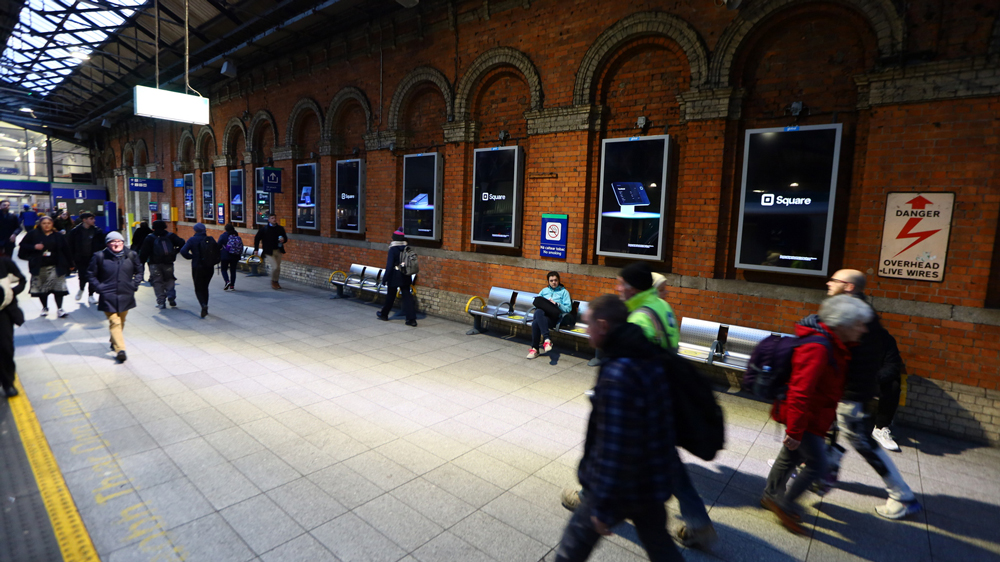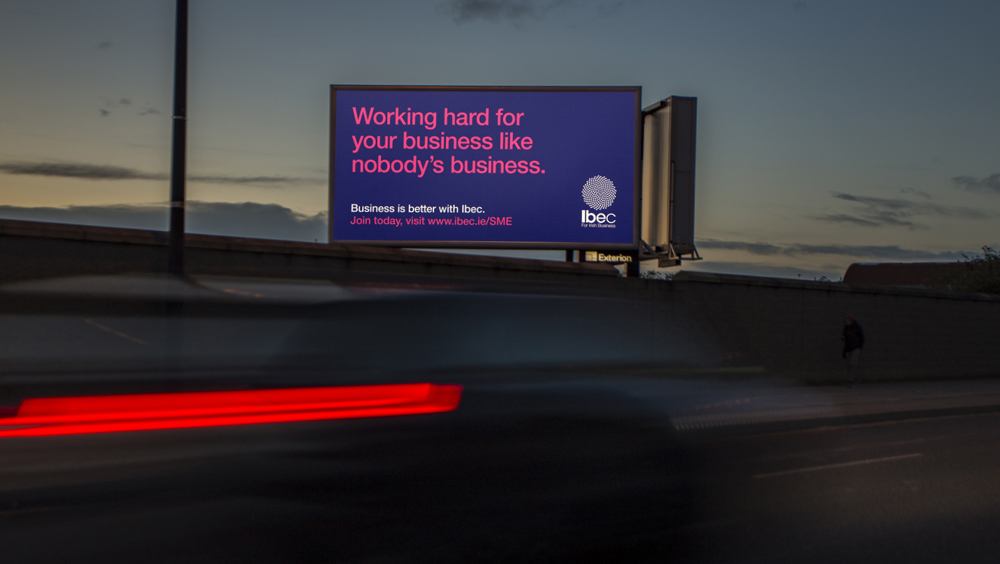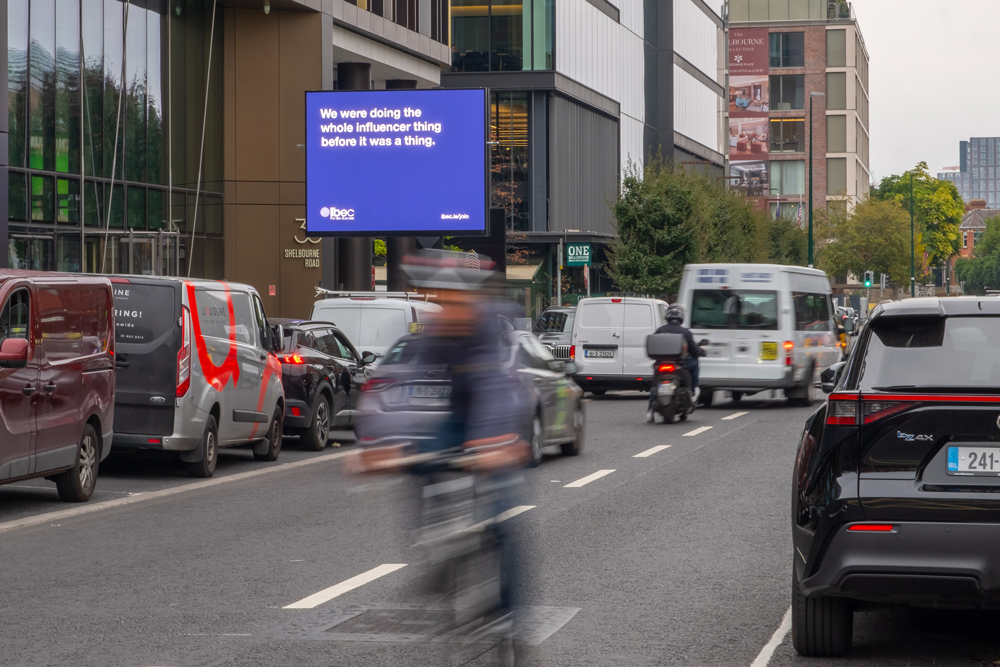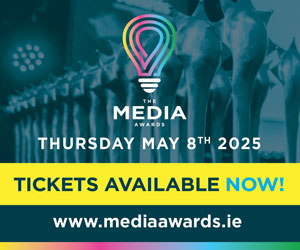 OOH advertising is not the sole preserve of consumer focused brands as more and more business-to-business brands looking to tap into the power of OOH, writes Ciara Gibney.
OOH advertising is not the sole preserve of consumer focused brands as more and more business-to-business brands looking to tap into the power of OOH, writes Ciara Gibney.
Out-of-Home (OOH) advertising is typically seen as the business-to-consumer (B2C) advertising medium. This is perhaps because traditionally OOH was associated with increasing consumer awareness, with posters and billboards strategically placed to attract the attention of as many consumer eyes as possible. Because of this, many B2B businesses choose digital advertising as their preferred marketing stream. However, OOH is more than just a B2C advertising medium, with the right strategy OOH can be the perfect medium to ACE your B2B campaigns.
Did you know that business decision makers are 20% more likely to discover new brands through OOH ads. Not to mention – they are constantly OOH – whether commuting by car, travelling to work via public transport, travelling internationally for a business trip or passing through major cities – OOH puts your brand right where they are, in the heart of the action.
Reach The Decision Maker Audience With OOH
Reach Them in Workplaces: With 44% of employees now working full-time in the office, it’s clear that traditional office environments are far from obsolete. Tuesdays, in particular, stand out with 43% of employees choosing it as one of their days on-site. Plus, with 41% of business decision makers using ad blockers – giving OOH a unique advantage as the only unskippable medium.
Reaching Them Using Modes of Transport: According to a Talon UK benchmark study, transport advertising is great at building trust. On average, each campaign boosts brand trust by 8%, increases unaided awareness by 9%, and drives brand consideration up by 6%. Business decision makers, often on the move, are generally heavy commuters, spending on average 9+ hours on private transport and dart, and 5-8 hours on Train, Luas and private transport. With Dublin ranked as the second slowest city for drivers globally, and the Luas on track to hit 50 million passengers this year, there’s no shortage of opportunities to engage this highly mobile audience.
Reaching Them in Airports: Reaching business decision makers in airports helps build brand familiarity, enhance brand perception, and engage a highly qualified, captive audience. With 81% of business travellers mixing business with leisure (bleisure travel), airport environments offer prime opportunities to engage. According to GWI, 70%of business travellers are more likely to notice B2B advertising when travelling, and 60% perceive brands advertised in airports as market leaders.
Use Creativity to Stand Out
As we know, incorporating some form of creativity is key to standing out. But cutting through doesn’t always mean big-budget specials. Talon benchmarks show that contextually relevant campaigns drive a +23% uplift across brand metrics, with consideration up by +63%, spontaneous ad awareness by +57%, and purchase intent by +50%. Dynamic creative then takes this one step further – boosting brain response by 32% when showing relevant content at the relevant moment. Adjusting for factors like weather, location or time of day, can increase brain response by 18%, making dynamic ads 48% more effective when comparing against classic OOH campaigns.
OOH is Effective At Reaching Key Business Decision Makers
By now, we’ve all seen it, but Kantar’s recent Media Reactions report confirms that OOH and Digital Out-of-Home (DOOH) are preferred media channels by global consumers. While OOH continues to excel in its traditional role of building brand awareness and fame it also fulfils a much greater role – driving bottom funnel metrics and direct action amongst consumers. Metrics which have previously been associated with online performance channels.
Sustainability Matters
There is currently a huge sustainability investment going on within the B2B space. In the public sphere OOH has an inherent responsibility to positively impact our local communities and environment. Did you know, per impression OOH emits less carbon than all other media measured?
According to an Outsmart/KPMG study it represents just 3.3% of the UK’s total advertising power consumption. The findings reveal that OOH makes up less than 3.5% of the total carbon footprint of the UK’s advertising activities. Why not invest in the channel that gives back?
When it comes to OOH advertising, there is a solution for every brand. At Talon, we believe OOH delivers across four main factors – we call these the ACES. We play these four ace cards to make sure your media plan succeeds: Audience, Creative, Effective & Sustainable. The potential of OOH as a tool to connect businesses to businesses should not be overlooked.
Ciara Gibney is marketing manager with Talon Ireland


























